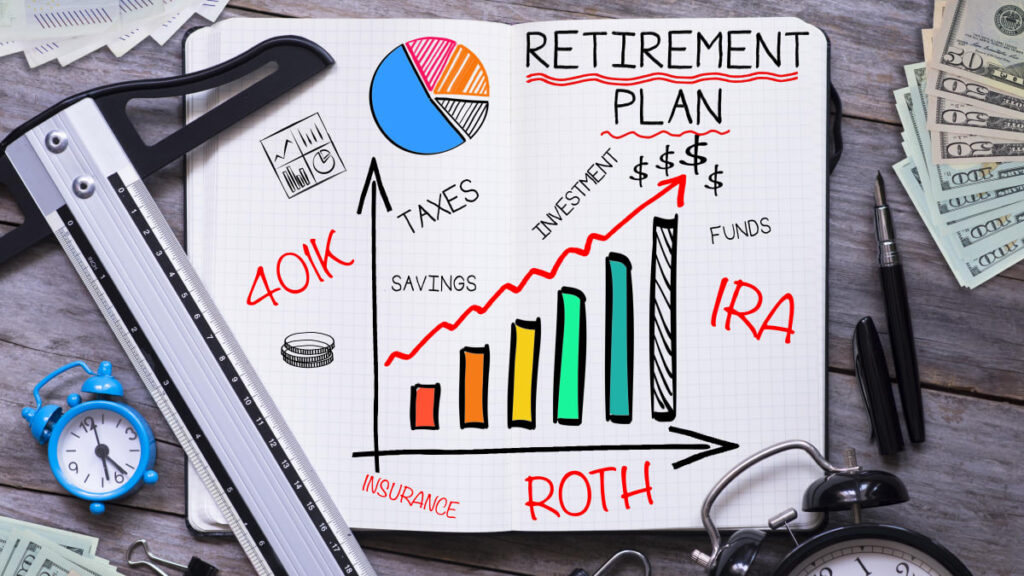Introduction: The Tools That Build Your Retirement Future
Retirement may feel far off when you’re in your 30s, but the steps you take today can make the difference between working because you have to — and retiring because you want to. At the heart of your long-term financial freedom are two powerful tools: the 401(k) and the IRA (Individual Retirement Account).
These accounts aren’t just for finance experts or high-income earners. They’re for everyday people who want to take control of their future — especially those in their 30s who have one huge advantage on their side: time.
This guide will break down how 401(k)s and IRAs work, how to use them effectively, and why they’re essential components of retirement planning in your 30s.
Why Your 30s Are the Best Time to Get Serious About Retirement
Your 30s might be packed with financial goals — paying off debt, buying a home, raising kids — but it’s also the perfect decade to start building serious wealth.
Here’s why:
- You’re likely earning more than in your 20s.
- You still have 30+ years until retirement.
- You can take advantage of compounding interest, where even small investments grow exponentially over time.
Example:
Saving just $300/month starting at age 30 with an average 7% return gives you over $370,000 by age 60. Start at 40? You’ll end up with half that amount.
Bottom line: Early action gives you more options and less stress down the line.
What Is a 401(k)?
A 401(k) is a retirement savings plan offered by employers, allowing you to contribute a portion of your salary directly into an investment account — before taxes.
Key Features:
- Tax-deferred growth: You don’t pay taxes on contributions or earnings until you withdraw in retirement.
- Employer match: Many companies match a portion of your contributions — which is essentially free money.
- High contribution limits: As of 2025, you can contribute up to $23,000 annually (including catch-up if over 50).
Real-world example:
If you earn $60,000 and contribute 6% ($3,600), and your employer matches 50% up to 6%, you’ll get an extra $1,800. That’s a 50% return right out of the gate.
What Is an IRA?
An IRA is an individual retirement account that you open yourself — no employer needed. It’s a flexible, self-directed way to grow your retirement savings.
There are two main types: Traditional IRA and Roth IRA.
✅ Traditional IRA
- Contributions may be tax-deductible, depending on your income and access to a 401(k).
- Withdrawals are taxed in retirement.
- Ideal if you expect to be in a lower tax bracket when you retire.
✅ Roth IRA
- Contributions are made with after-tax dollars.
- Withdrawals (including earnings) are 100% tax-free in retirement, if certain conditions are met.
- Great if you’re in your 30s and expect to be in a higher tax bracket later.
2025 contribution limit: $6,500 (or $7,500 if you’re 50+)
401(k) vs. IRA: Which One Should You Choose?
You don’t have to choose — you can (and often should) have both. But here’s a general rule of thumb:
- Start with your 401(k) — especially if there’s an employer match. Don’t leave free money on the table.
- Open a Roth IRA — take advantage of tax-free growth.
- Max out both if possible, then consider a taxable brokerage account for additional investing.
| Feature | 401(k) | Traditional IRA | Roth IRA |
|---|---|---|---|
| Tax Treatment | Pre-tax | Pre-tax (may be deductible) | After-tax |
| Contribution Limit | $23,000 | $6,500 | $6,500 |
| Employer Match | Yes (if offered) | No | No |
| Withdrawal Taxes | Yes | Yes | No (if qualified) |
| Income Limits | No (for contributions) | Yes (for deduction) | Yes (for contribution) |
The Power of Compound Interest
Compound interest is what makes retirement savings grow exponentially over time. It’s your reward for starting early and being consistent.
Example:
Invest $10,000 at age 30 with 7% annual returns:
- After 10 years = ~$19,700
- After 20 years = ~$38,700
- After 30 years = ~$76,000
- After 35 years = ~$106,000+
You didn’t invest more — you just gave it time to grow.

Actionable Steps for Retirement Planning in Your 30s
Let’s break it down into clear, doable steps:
- Set your retirement goals
- Estimate what age you’d like to retire.
- Calculate how much income you’ll need. Use the 25x rule: multiply your annual expenses by 25.
- Open a 401(k) and contribute enough to get the match
- Increase your contribution by 1% every year until you hit at least 15%.
- Start a Roth IRA
- Automate monthly contributions (even $100/month adds up).
- Choose a low-cost target-date fund if you’re not ready to manage investments yourself.
- Track your net worth annually
- Use apps like Personal Capital, YNAB, or spreadsheets to monitor progress.
- Review and rebalance your portfolio
- Make sure your investments match your age, risk tolerance, and timeline.
Common Mistakes to Avoid
Even the best-intentioned plans can get off course. Here are a few traps to steer clear of:
❌ Waiting too long to start
Every year you delay means you’ll have to save more later.
❌ Not taking the 401(k) match
It’s free money — seriously, don’t pass it up.
❌ Relying only on one account
Mixing pre-tax and after-tax accounts gives you tax flexibility in retirement.
❌ Trying to time the market
Invest consistently instead of waiting for “the right time.”
❌ Not budgeting for inflation
That $50,000/year you need today will be closer to $85,000 in 30 years.
Real-Life Analogy: Building a Retirement Fund Is Like Growing a Garden
You don’t plant seeds today and expect tomatoes tomorrow. You water it, give it sunshine, protect it from weeds — and eventually, it bears fruit.
Your retirement accounts are the same. With time, care, and consistency, they’ll grow into something nourishing and lasting. But the sooner you plant, the sooner you harvest.
Final Thoughts: Your Future Self Is Counting on You
Understanding 401(k)s and IRAs isn’t about mastering Wall Street — it’s about mastering your money. These accounts are simple, powerful tools that allow you to buy freedom with time.
Starting in your 30s gives you decades to build wealth, make smart decisions, and avoid the stress that comes with playing catch-up later.
Call to Action: Make Your Move Today
- Already have a 401(k)? Increase your contribution this week.
- No Roth IRA yet? Open one and set up auto-deposits.
- Not sure where to start? Schedule a free consultation with a financial advisor or use a robo-advisor like Betterment or Fidelity Go.
Retirement planning in your 30s isn’t just a good idea — it’s a game-changer. Start now. Your 60-year-old self will be grateful.


